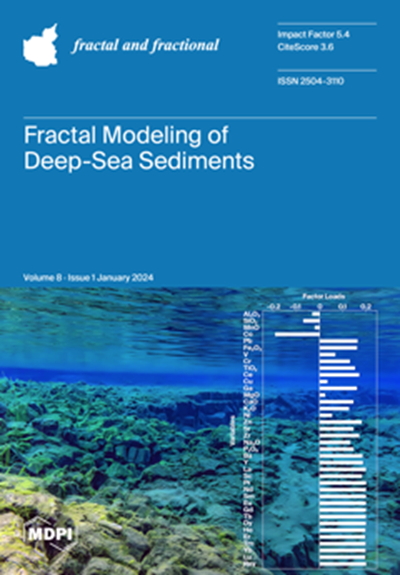Exploring Propagating Soliton Solutions for the Fractional Kudryashov–Sinelshchikov Equation in a Mixture of Liquid–Gas Bubbles under the Consideration of Heat Transfer and Viscosity
IF 3.3
2区 数学
Q1 MATHEMATICS, INTERDISCIPLINARY APPLICATIONS
引用次数: 0
Abstract
In this research work, we investigate the complex structure of soliton in the Fractional Kudryashov–Sinelshchikov Equation (FKSE) using conformable fractional derivatives. Our study involves the development of soliton solutions using the modified Extended Direct Algebraic Method (mEDAM). This approach involves a key variable transformation, which successfully transforms the model into a Nonlinear Ordinary Differential Equation (NODE). Following that, by using a series form solution, the NODE is turned into a system of algebraic equations, allowing us to construct soliton solutions methodically. The FKSE is the governing equation, allowing for heat transmission and viscosity effects while capturing the behaviour of pressure waves in liquid–gas bubble mixtures. The solutions we discover include generalised trigonometric, hyperbolic, and rational functions with kinks, singular kinks, multi-kinks, lumps, shocks, and periodic waves. We depict two-dimensional, three-dimensional, and contour graphs to aid comprehension. These newly created soliton solutions have far-reaching ramifications not just in mathematical physics, but also in a wide range of subjects such as optical fibre research, plasma physics, and a variety of applied sciences.考虑传热和粘度的液气混合气泡中分数阶Kudryashov-Sinelshchikov方程的传播孤子解的探索
本文利用适形分数阶导数研究了分数阶Kudryashov-Sinelshchikov方程(FKSE)中孤子的复杂结构。我们的研究涉及使用改进的扩展直接代数方法(mEDAM)开发孤子解。该方法涉及到一个关键变量变换,将模型成功地转化为一个非线性常微分方程(NODE)。随后,通过使用级数形式的解,节点被转化为一个代数方程系统,允许我们有系统地构造孤子解。FKSE是控制方程,允许传热和粘度效应,同时捕获液气气泡混合物中压力波的行为。我们发现的解包括带扭结、奇异扭结、多扭结、团块、冲击和周期波的广义三角函数、双曲函数和有理函数。我们描绘二维、三维和等高线图形来帮助理解。这些新创建的孤子解不仅在数学物理中具有深远的影响,而且在光纤研究、等离子体物理和各种应用科学等广泛的学科中也具有深远的影响。
本文章由计算机程序翻译,如有差异,请以英文原文为准。
求助全文
约1分钟内获得全文
求助全文
来源期刊

Fractal and Fractional
MATHEMATICS, INTERDISCIPLINARY APPLICATIONS-
CiteScore
4.60
自引率
18.50%
发文量
632
审稿时长
11 weeks
期刊介绍:
Fractal and Fractional is an international, scientific, peer-reviewed, open access journal that focuses on the study of fractals and fractional calculus, as well as their applications across various fields of science and engineering. It is published monthly online by MDPI and offers a cutting-edge platform for research papers, reviews, and short notes in this specialized area. The journal, identified by ISSN 2504-3110, encourages scientists to submit their experimental and theoretical findings in great detail, with no limits on the length of manuscripts to ensure reproducibility. A key objective is to facilitate the publication of detailed research, including experimental procedures and calculations. "Fractal and Fractional" also stands out for its unique offerings: it warmly welcomes manuscripts related to research proposals and innovative ideas, and allows for the deposition of electronic files containing detailed calculations and experimental protocols as supplementary material.
 求助内容:
求助内容: 应助结果提醒方式:
应助结果提醒方式:


